Have you ever wondered why your website’s landing page isn’t turning visitors into customers? It can be frustrating when potential customers land on your page and quickly bounce off without taking any desired action.
In fact, only 22% of businesses are satisfied with their conversion rates, which includes landing page conversions.
If your landing page conversion rates feel stuck, this guide is for you. We will provide effective landing page optimization strategies to make the most of your audience.
But first, what exactly is a landing page, and why is it crucial for online success? And why are your conversion rates dwindling? Keep reading to learn more.
Table of Contents
What is a landing page?
When should you use a landing page?
What is a good landing page conversion rate?
What is landing page optimization?
Benefits of optimizing your landing page
Reasons why your landing page is not converting leads
Tips to improve landing page conversion rates
Conclusion
What is a landing page?
A landing page is a web page used for a specific marketing or advertising campaign. Its primary purpose is to convert visitors into leads or customers by encouraging a specific action, like filling out a form, subscribing to a newsletter, or making a purchase.
When should you use a landing page?

As an e-commerce business owner, you can utilize landing pages strategically based on specific scenarios and objectives. Some of the instances where a dedicated landing page can be used include:
- Launching a new product or service
- When the goal is to capture valuable leads like email addresses
- Highlighting limited-time promotions or exclusive offers
- Event registrations like webinars or conferences
- Segmented advertising campaigns to specific groups
- When offering downloadable content such as whitepapers or free ebooks
What is a good landing page conversion rate?
According to HubSpot, the average conversion rate for landing pages across industries is 5.98%. However, experts claim 10% is a good conversion rate.
Achieving this milestone can only be possible if you create landing pages that work for you and your visitors. In addition, regularly updating and optimizing your landing page based on data and analytics is crucial. Remember that a conversion rate can only be good if it improves over time and aligns with your business goals.
What is landing page optimization?
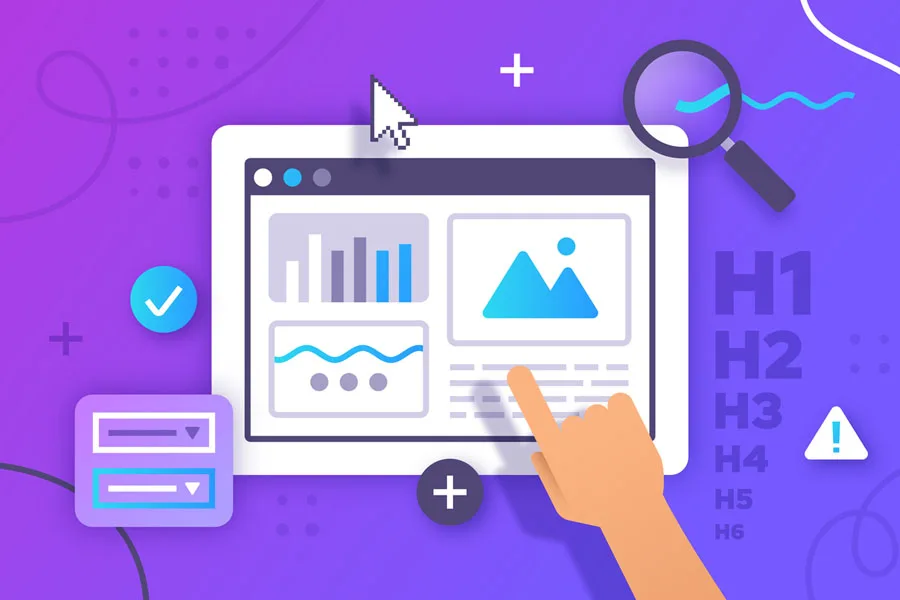
Landing page optimization (LPO) is a subdivision of conversion rate optimization that involves enhancing a landing page to maximize the percentage of visitors who complete a transaction.
LPO uses data analysis, A/B testing, and user feedback to identify and address barriers to conversion. Elements to optimize on a landing page include layout, content, and calls-to-action, which in turn create a seamless and compelling user experience.
Landing page optimization aims to refine and improve a website’s performance. This ultimately increases the likelihood of visitors completing the intended goal, maximizing your return on investment, and achieving business objectives.
Benefits of optimizing your landing page
Below are some advantages of a high-converting landing page:
1. Increase revenue
Optimizing your landing page ensures that your visitors quickly find valuable information, compelling them to take desired actions such as purchasing a product, significantly boosting your sales revenue.
Take the example of Moz, an SEO company that exemplifies the power of an optimized landing page. They transformed their landing page into an effective sales tool through meticulous design. Their optimization efforts led to a substantial increase in conversion that translated into an impressive US $1,000,000 in revenue in just one year.
2. Enhanced user experience
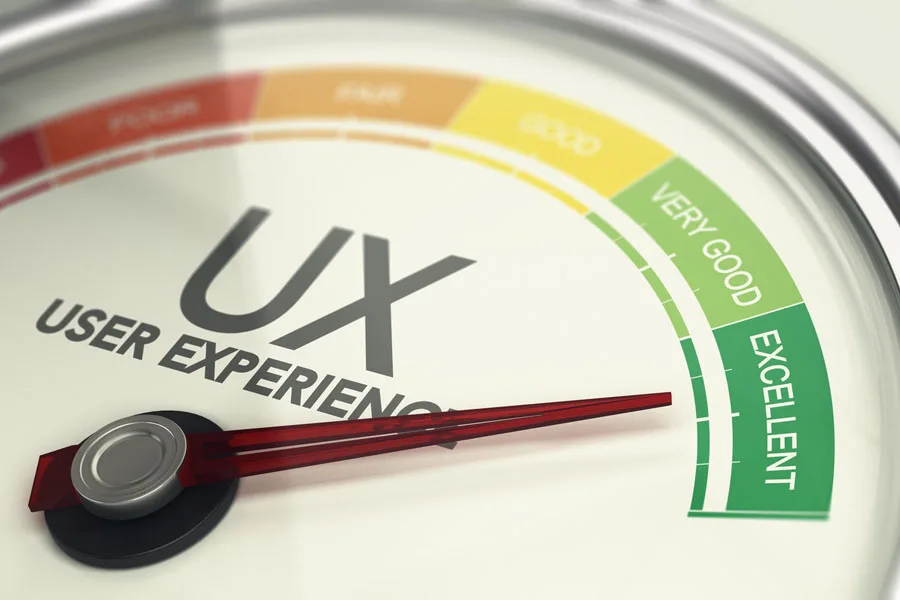
Imagine a scenario where a potential lead arrives at your landing page. The layout is clean, the content is concise, and the call-to-action buttons are strategically placed. They don’t have to search for information—it’s seamlessly presented.
This frictionless journey transforms a curious visitor into an engaged prospect, significantly increasing the likelihood of conversion. Studies show that landing pages with enhanced UX designs can drive conversions by 400%.
3. Reduced acquisition costs
Landing page optimization reduces acquisition costs by boosting conversion rates, leading to more efficient use of marketing budgets.
According to expert statistics, well-optimized landing pages have a 160% higher conversion rate for actions like sign-ups, which means that a larger proportion of website visitors are transformed into leads or customers. This increased efficiency in conversion directly reduces the cost per acquisition, ensuring that marketing resources are utilized more effectively and that the overall return on investment improves.
Reasons why your landing page is not converting leads
Most landing pages encounter challenges in converting leads because of various common pitfalls. Understanding these mistakes helps you come up with effective landing page optimization strategies. Below are some reasons landing pages fail to convert:
1. Overwhelming page design.
A complex or cluttered layout can overwhelm site visitors, distracting them from the main message or call to action.
2. Slow page load times

In today’s fast-paced digital environment, slow-loading pages can deter users. A delay of just a few seconds can significantly impact bounce rates and conversions. A 2-second delay, for instance, increases the bounce rate by 103%.
3. Lack of mobile optimization
55% of users access websites on mobile devices. If your landing pages are not optimized for mobile users, a significant portion of them can decide to leave. Studies show that a 1-second delay in mobile page load time reduces conversions by 20%.
4. Lack of trust signals
Landing pages without trust signals like testimonials, security badges, or clear privacy policies leave users doubtful about providing their information online. 49% of web visitors have trust issues with websites without trust badges.
5. Unclear/lack of a call to action
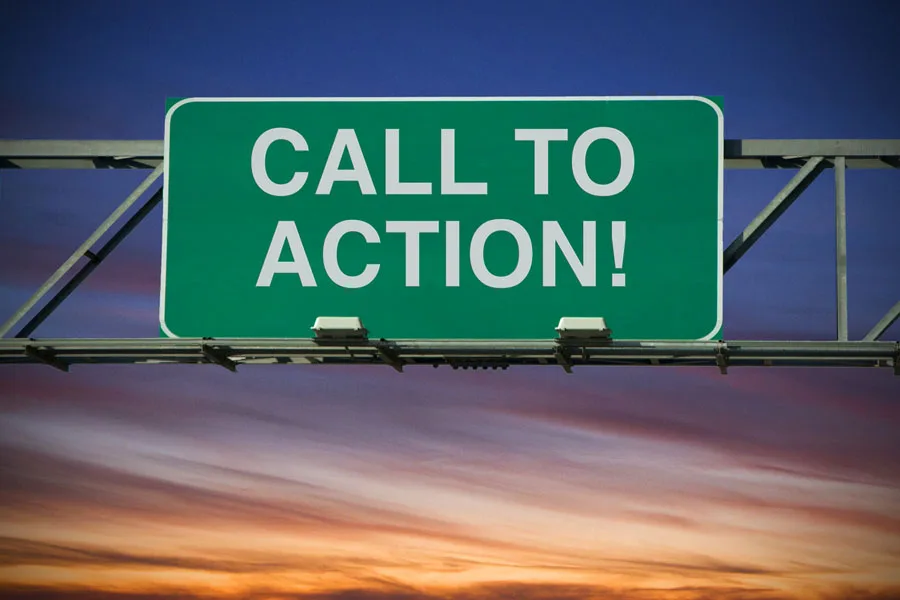
When a landing page lacks a prominent or compelling CTA, visitors may be unsure about the next steps, leading to hesitation and a higher bounce rate. A report by Small Business Trends shows that 70% of business websites lack a call to action, making them miss out on potential business.
6. Ineffective copy
If the landing page’s content fails to address the target audience’s pain points or convey a compelling story, it may not resonate, resulting in a lower conversion rate.
7. Poorly defined value proposition
Visitors may not see a reason to engage further if the landing page isn’t communicating the unique value of the product or service.
Tips to improve landing page conversion rates
1. Include all important elements of a landing page
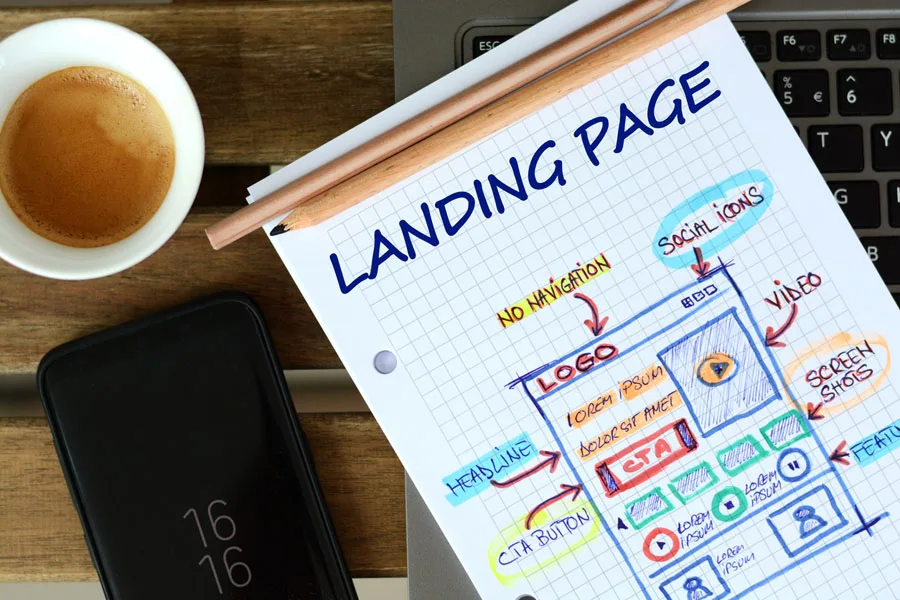
A landing page serves as a vital tool for converting visitors into leads. It should comprise key elements to drive conversions and make it effective. The main components your landing page should have are:
- Compelling headline and subheadline
- Clear offer description
- Engaging visuals, images, or videos
- Supporting elements like testimonials, contact information, and trust badges
- Lead capture form
2. Ensure your landing page message matches your ads
Aligning your landing page message with your ads is pivotal for conversion success. Consistency breeds trust, assuring visitors they’ve arrived at the right place.
Seamlessly transitioning from ad to landing page enhances user experience, reduces bounce rates, and fosters a stronger connection with your audience. This ultimately leads to higher conversion rates and improved overall campaign performance.
3. Remove navigation and other distractions
Removing unnecessary directional cues and distractions on your landing page is a CRO strategy you can apply. By doing so, you guide visitors’ attention directly to your offer.
According to a study by Wordstream, landing pages without navigation links can experience a significant boost in conversion rates, with an average improvement of 40%.
In a revelation by VWO, one of their clients, Yuppiechef, increased their signups by 100% after eliminating a navigation menu on their landing page. This case study underscores the importance of minimizing distractions to enhance user engagement and increase the likelihood of conversions.
4. Emphasize the offer’s value

If you are struggling to make your landing page more convincing, it’s probably because you’re not effectively communicating the value of your offer in your copy.
How can you ensure that your value propositions are crystal clear? Try to highlight the unique benefits of the product or service while addressing your audience’s specific pain points.
If you convey how your offer provides a solution, this clarity fosters a connection between your product and your audience, which makes them more willing to convert to paying customers.
5. Only ask for information you really need

To boost landing page conversions, only request essential information. Imagine asking a visitor for their phone number when promoting an ebook—this might discourage conversions.
People are wary of sharing unnecessary details. Even nearly half of the global population is concerned about sharing personal information. Therefore, keep your forms simple; if an email suffices, stick to that.
For instance, a visitor seeking a free trial might hesitate if bombarded with lengthy forms. In fact, the average number of form fields is 11. Reducing them to four fields can boost conversions by 120%. By seeking only vital details, you build trust and increase the likelihood of a visitor becoming a valued lead.
6. Create more landing pages to generate more leads
Diversifying landing pages enhances your lead-generation efforts. A Hubspot study revealed that landing pages have the best signup rate at 23%. This makes them a valuable piece of your marketing strategy.
You can create targeted pages for different audience segments or products, enabling you to tailor content to specific needs. Some examples of effective landing pages you can create include pages for quick signups, product pages highlighting offerings, testimonial pages for social proof, and long-form pages that offer in-depth information.
Each page caters to different user preferences and encourages engagement. The more landing pages you create, the more opportunities you have to capture leads, providing a versatile strategy that maximizes lead generation and optimizes user experience, which fuels your conversion rates.
7. Make your call to action clear and ambiguous
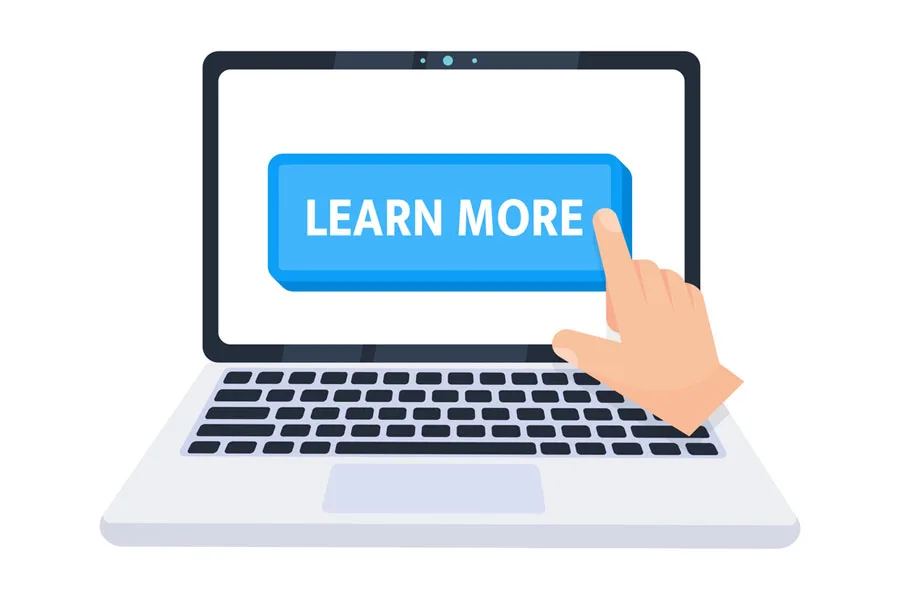
A clear and compelling call-to-action (CTA) is crucial for landing page effectiveness. A CTA button guides visitors on what action to take, enhancing the likelihood of conversions.
If visitors land on a page with a vague CTA, they might hesitate and become unsure about their actions. Making it unambiguous minimizes confusion, ensuring visitors understand the next step. For instance, a CTA with less clutter and more white space can increase conversion rates by 232%.
8. Reduce page loading time
Reducing page load times is a great way to minimize landing page bounce rates. Accelerating your landing page load speed to a minimum ensures visitors enjoy a seamless user experience.
Research indicates that a 1-second delay can result in a 7% reduction in conversions, and by prioritizing swift loading, you not only retain visitor interest but also enhance search engine rankings.
In the competitive landscape of online engagement, a faster-loading landing page isn’t just a strategy—it’s the accelerator for higher conversion rates, improved user satisfaction, and a competitive edge in the digital race.
9. Test and update your landing pages
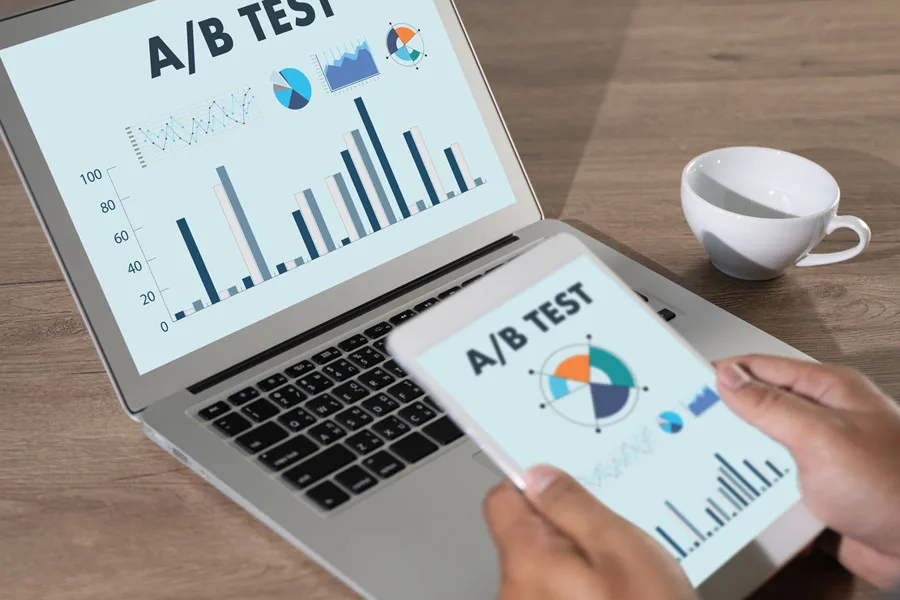
Embracing a culture of continuous improvement through A/B testing and regular updates can boost your landing page performance. This strategy has helped businesses improve their conversion rates by 60%. A/B testing, where two page versions are compared, helps you identify what landing page design elements resonate best with your audience.
Best practices when split testing include setting clear goals and testing one element at a time to get the best results. In addition, keep your pages fresh by updating content, images, and buttons based on test results.
Therefore, treat your landing pages like a work in progress, always improving through smart testing and quick updates to get more people to take action on your site.
Conclusion
Optimizing your landing page is a crucial aspect of digital marketing, and this guide provides some practical landing page optimization tips that you can apply to propel your business to the next level. Taking these steps assures you more leads, better experiences, and more revenue for your e-commerce site.




